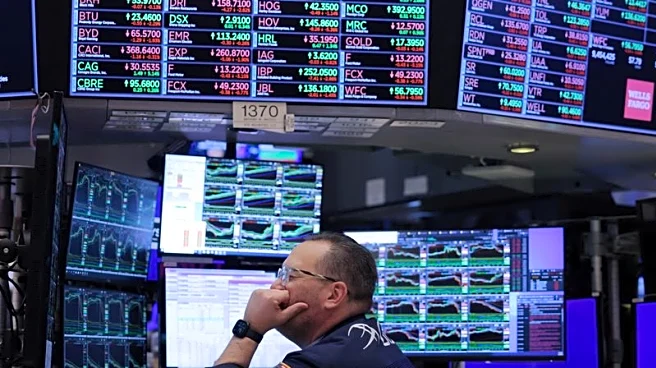What is the story about?
What's Happening?
Consus Ag Consulting has reported a mixed start to the trading week, with soybeans showing strength while grains struggle. Karl Setzer, a partner at Consus Ag Consulting, noted that soybeans are benefiting from a firming cash market and concerns that the U.S. crop may fall short of current estimates, which are already below projected new crop demand. The soybean harvest is winding down across the U.S., and the basis is firming. Corn basis is also firming as farmers show little interest in marketing at current values. Meanwhile, wheat prices have seen declines, with December CBOT wheat down 3 cents at $4.95½ per bushel, December KC wheat down 3 cents at $4.80 per bushel, and December Minneapolis wheat down 7½ cents at $5.26¼ per bushel. In other markets, December live cattle prices increased by $1.15 to $243.67 per hundredweight, and December crude oil rose by 87 cents to $59.35 per barrel.
Why It's Important?
The mixed trade in agricultural commodities reflects broader market dynamics and potential impacts on U.S. farmers and the agricultural sector. The firming cash market for soybeans suggests strong demand, which could benefit soybean producers. However, the lack of interest in marketing corn at current values indicates potential challenges for corn farmers. The decline in wheat prices may affect wheat producers' profitability. These developments are crucial for stakeholders in the agricultural industry, including farmers, traders, and policymakers, as they navigate market fluctuations and assess future strategies.
What's Next?
As the soybean harvest concludes, market participants will closely monitor crop yield estimates and demand projections to inform trading decisions. The firming basis for soybeans and corn may influence farmers' marketing strategies, potentially leading to shifts in supply dynamics. Additionally, stakeholders will watch for any changes in global agricultural productivity and demand trends, which could impact U.S. crop prices and trade. The broader economic indicators, such as the S&P 500 and Dow Jones Industrial Average, may also influence market sentiment and trading activity.
AI Generated Content
Do you find this article useful?















